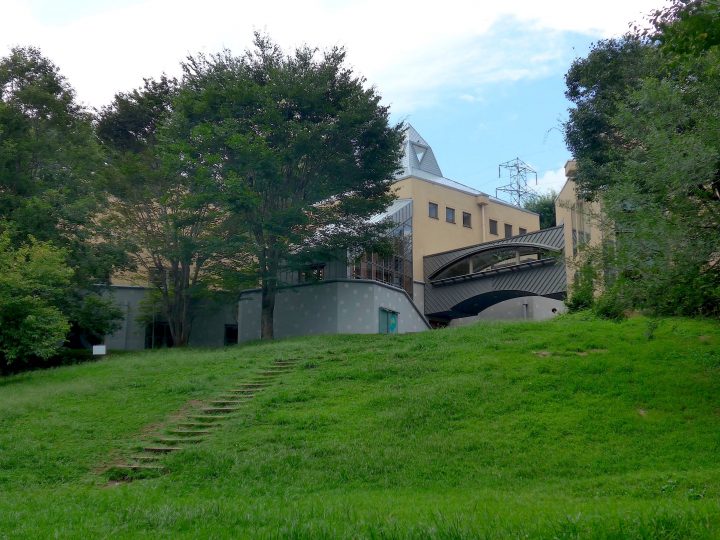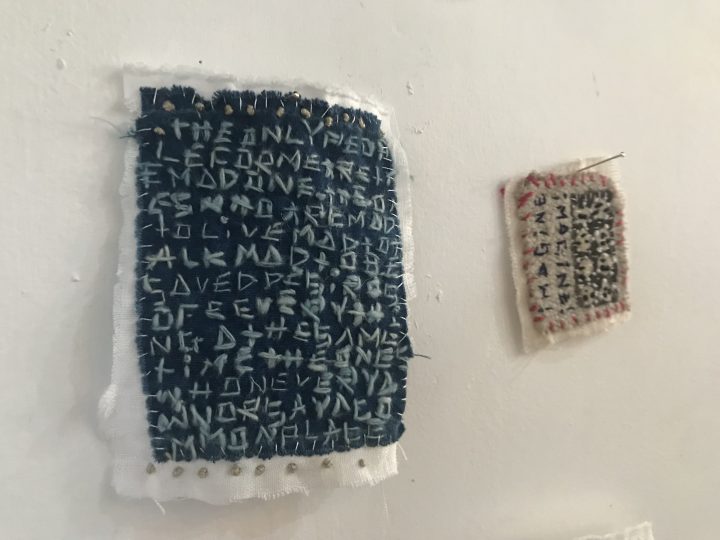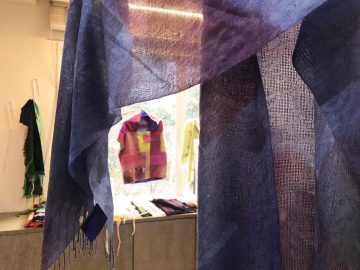"56th Venice Biennale International Art Exhibition" Report Part 2
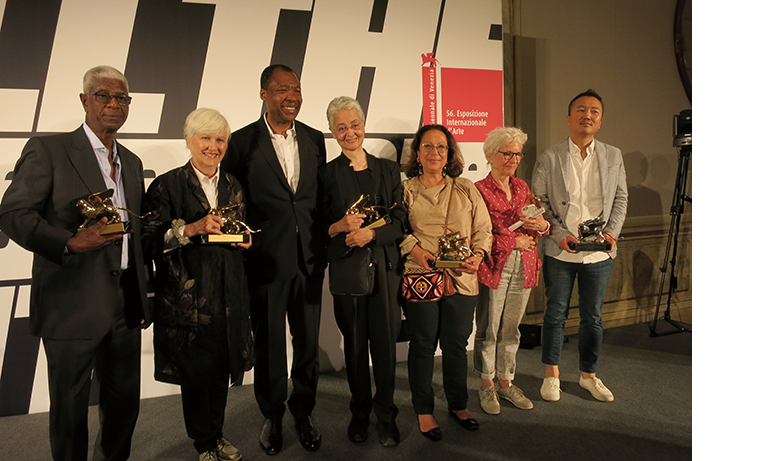
2015.8.25
"Exhibition of Golden Lion Award-winning artists and national pavilions, a guide to appreciating 120 years of history and the future"
The Venice Biennale, which was established by the city of Venice to contribute to the development of arts and culture, is celebrating its 120th anniversary this year.
Today, it has grown into one of the world's largest international art exhibitions, with a special exhibition featuring 136 artists from 53 countries, as well as exhibitions in 89 national pavilions, including the Japan Pavilion, which we interviewed last time. In each work, you can see the diversifying expressions of art that are occurring at the same time as the globalization that is occurring on a global scale.
In this report, we will be taking a virtual tour by a Magcal editorial correspondent, who will be introducing the exhibitions of Golden Lion-winning artists and the country pavilions, as well as the history of the milestone Venice Biennale.
First, reflect on history at Cafe Florian, then listen to Marx in the main hall
Cafe Florian, a long-established coffee shop founded in 1720 in St. Mark's Square, a tourist destination in the heart of Venice that is praised as the most beautiful square in the world, used to be a place where artists and intellectuals gathered and discussed almost every night. In 1893, the idea for the Venice Biennale was born in this cafe. The Biennale was also intended to demonstrate the power of the court, but it also aimed to expand the function that the cafe already fulfilled, which was to recognize the diversity of contemporary art both domestically and internationally and to exchange free speech through art and culture. While thinking about such historical facts, let's first relax from the fatigue of traveling and prepare to view the vast exhibitions.
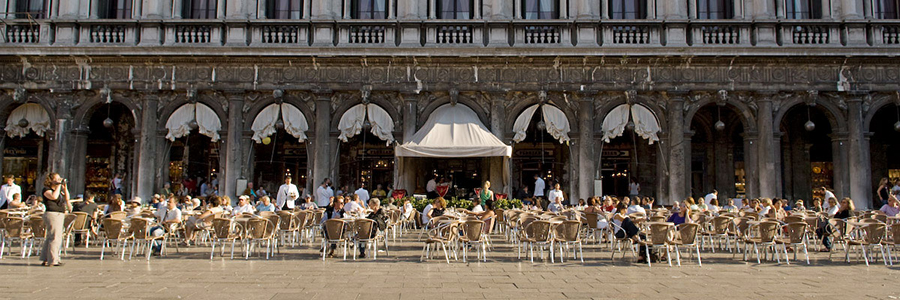
Caffè Florian Provided by: Caffè Florian Venezia (Archivio Caffè Florian)
Let's head to the exhibition rooms of the two main venues: the Arsenale, which uses the former site of the National Shipyard, and the Giardini, the island's largest park, which is filled with greenery. First, go to the Central Pavilion of the Giardini. Here, a large red arena (theater) was created, which characterizes this Biennale. The Venice Biennale has truly reflected the dramatic historical transition from the late 19th century to the 21st century, from modern times to the present. From the stage located in the center of the exhibition venue, a program is being carried out to re-examine the situation of modern society and explore today's artistic expression while crossing fields other than art. In addition to readings of Marx's "Das Kapital" (4 volumes in total), which is the main reference material for the special exhibition, every day over the seven-month period, there will also be panel discussions, performances including music and dance, and screenings of video works, which can be freely viewed.
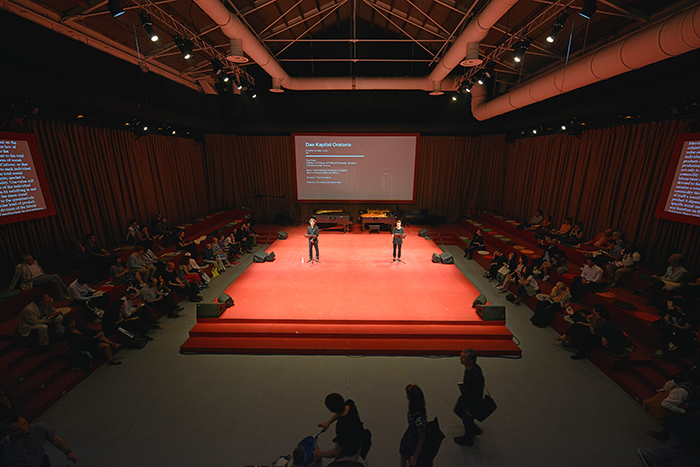
The "Arena" set up in the Giardini Central Pavilion and the events held there
Isaac Julien
《DAS KAPITAL Oratorio》, 2015.
Photography: Andrea Avezzù Provided by: la Biennale di Venezia
Special Exhibition "The Future of the World"
Let's continue looking at the Central Pavilion. At the top of a five-meter ladder, there is a sign that reads "The END," just like the end of a movie. The exhibition begins with the "end of eternity" or a scene before the screen goes dark, as suggested by this large installation work by Fabio Mauri (1926-2009), a Roman who was also a friend of the Italian film world during his lifetime, and continues with exhibits by new and old artists.
The overall theme of this year's exhibition is "All the World's Futures." The general director is Okwui Enwezor, born in Nigeria in 1963 and currently director of the Haus der Kunst in Munich, Germany. He has demonstrated his skills in exhibitions that address various issues in society as it transitions from Western-centrism to the post-colonial era. In light of the current situation in which various rifts have arisen due to the aforementioned "capital," this Biennale has once again considered the connection between this unstable world and history, and attempted to present a new relationship (future) between art and society.
Golden Lion winner Adrian Piper (born in New York in 1948, currently lives and works in Berlin) will exhibit a blackboard drawing of "Everything will be taken away" (Everything 21, 2010-13) at the Giardini, and The Probable Trust Registry: The Rules of the Game #1-3 (2013) in the Arsenale. The former imagines a child being forced to write the same word over and over again as punishment, suggesting that everything is bound to fall apart, while the latter is a participatory installation where viewers sign a declaration that reads "I WILL ALWAYS BE TOO EXPENSIVE TO BUY," cleverly mocking the discourse that takes hold in capitalist society. At the Arsenale, make time to see documentary filmmaker Lim Heung-sun (born in Seoul in 1969, currently lives and works in Seoul). He won the Silver Lion Award for young artists for his feature-length film Factory Complex (2014), which featured interviews with about 20 Asian female workers and scenes of their struggles. At the awards ceremony, Heunsun said, "I want to convey that labor, life, and everyday life are always one and the same with art."
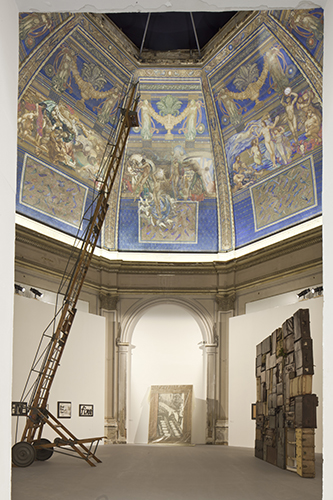
Fabio Mauri
《Macchina per fissare acquerelli》, 2007.
Fabio Mauri e Pier Paolo Pasolini alle prove di Che cosa p il Fascismo 1971, 2005.
Il Muro Occidentale o del Pianto, 1993.
Photography: Alessandra Chemollo ©la Biennale di Venezia
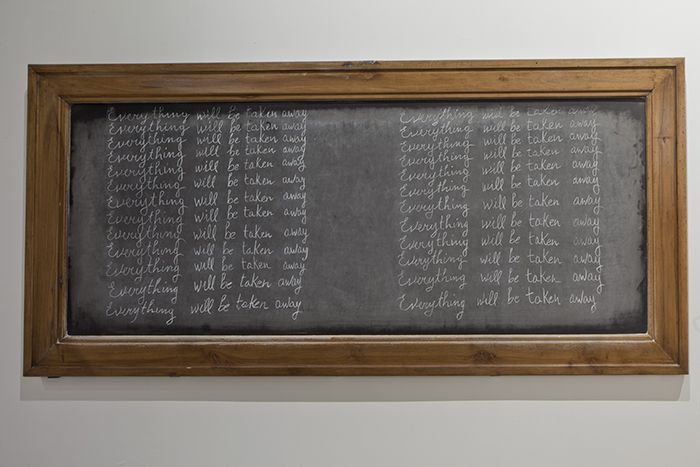
Adrian Piper
《Everything 21》,2010-2013.
Photography: Alessandra Chemollo ©la Biennale di Venezia

Adrian Piper
"The Probable Trust Registry: The Rules of the Game #1-3", 2013. (Exhibition view)
Photography: Alessandra Chemollo ©la Biennale di Venezia
Diversifying National Pavilions
In the Giardini, where many unique national pavilions stand, be sure to stop by the Belgian Pavilion. The Belgian Pavilion was the first national pavilion built in 1907. This exhibition, which features more than 10 artists from around the world, including those based in Brussels, aims to uncover a "microhistory" of the Congo, which was colonized by the Belgian government in 1908. The video, which features songs of rebellion against domination and rumba rhythms, moves away from the unfortunate story of exploitation and violence that occurred between Europe and its colonies, and reveals the beneficial effects of promoting cultural activities such as art, music, and activism that developed in the Congo during the colonial period.

《One.Two.Three》,2015. Vincent Meessen and Normal, Brussels
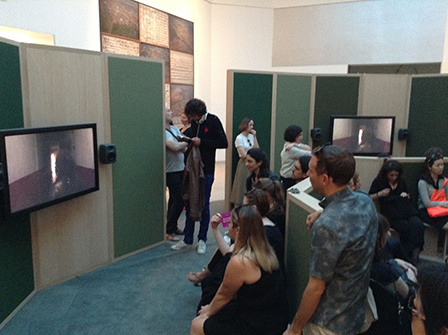
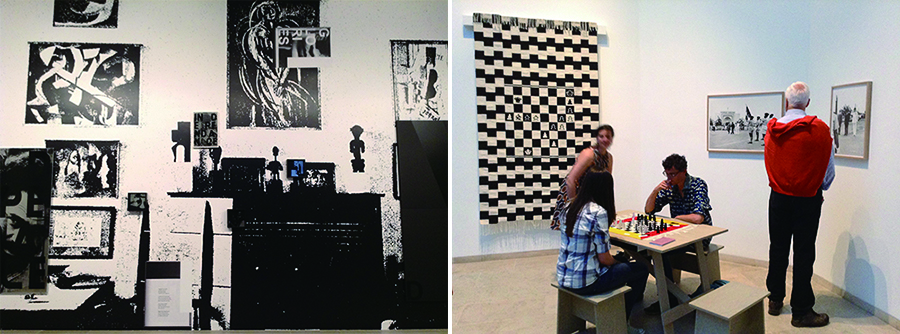
Belgium Pavilion "Personne et les Autres" Exhibition (Exhibition view)
Photo: MAGCUL.NET Editorial Department
http://www.personne-et-les-autres.be/
Finally, let's head to the Armenian Pavilion, which won the Golden Lion this year. The exhibition venue is a monastery on the island of San Lazzaro degli Armeni (meaning "Armenian Island"), about 20 minutes by boat from the main island of Venice. Here too, a group exhibition is being held by 16 artists from different places of birth and bases of activity, all of whom are descendants of people who were dispersed during the Armenian Genocide that occurred 100 years ago. Their homeland, located in the east of Turkey, is constantly invaded by other ethnic groups, and this island was also given by the Republic of Venice to Armenian monks who fled the country during the Turkish invasion in the 18th century. In this milestone year, artists from all nationalities have come together to consider "Armenity," and they are exhibiting works that trace their identities and memories. Sarkis (born in Istanbul in 1938, currently living and working in Paris), who was born in Turkey, one of the invading countries at the time, has created a work that depicts everyday life on stained glass windows, where religious paintings are usually painted, and is illuminated by LEDs at night, regardless of natural light, while Hera Büyüktaşçıyan (born in Istanbul in 1984, currently living and working in Paris) has created a sculpture that expresses the history of this monastery as one of the most important printing presses in Europe. These contemporary works seem to achieve a peaceful "reunion" and "reconciliation" in this quiet monastery. You can feel the power of artistic exchange that overcomes negative history.
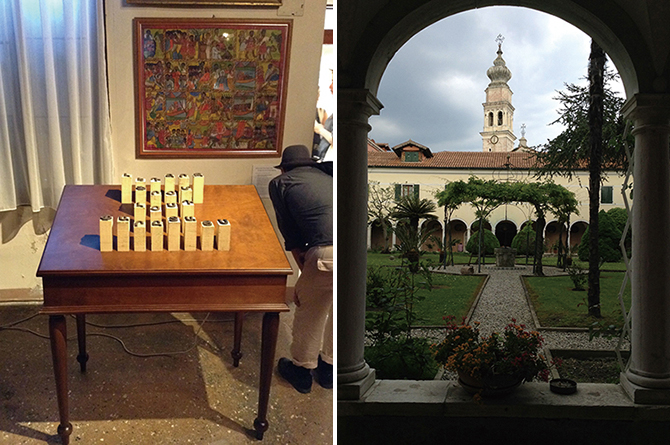
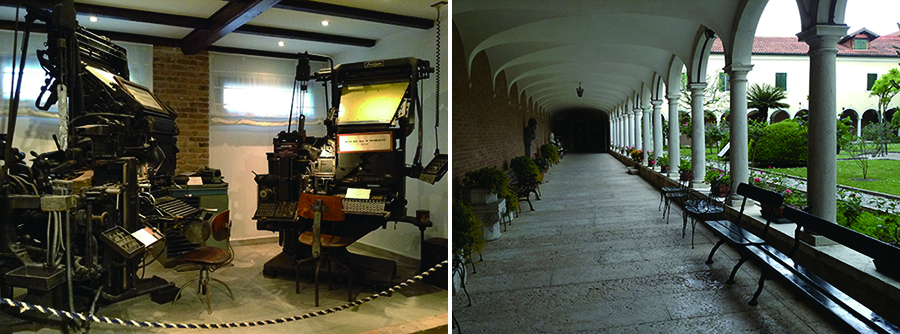
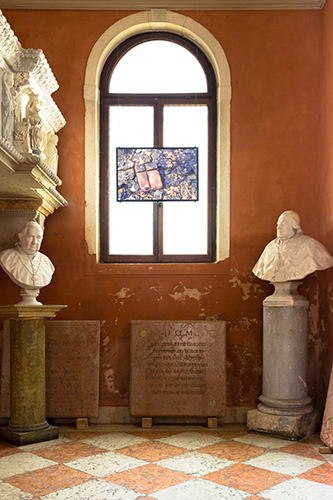
"Armenity/" Exhibition at the Armenian Pavilion (Exhibition view)
http://www.armenity.net/
[Top 4 photos] Photos: MAGCUL.NET Editorial Department
[Lower 1 point] Sarkis《Croix de brique, from Ailleurs ici, Chaumont-sur-Loire》, 2012. © Piero Demo, 2012
Report author: Iida Mami (art historian)

